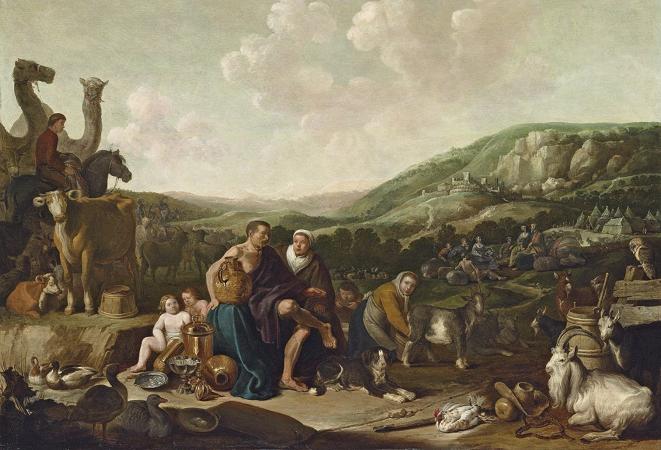Ludolf Leendertsz de Jongh (1616 - 1697). Ludolf Leendertsz de Jongh was a Dutch Golden Age painter, and member of the vroedschap. De Jongh was the son of a shoemaker, who wanted to teach his son his craft. When his father moved to Rotterdam, the young Ludolf decided to learn art rather than shoemaking, and became a pupil of Cornelis Saftleven. Later he studied under Anthony Palamedes in Delft, and later still with Jan van Bijlert in Utrecht. In 1635, he travelled to France with Frans Bacon. Seven years later, in 1642, he returned to the Netherlands when he heard that his mother had fallen ill. He set up shop in Rotterdam, and his earliest signed paintings date from that year. According to Houbraken his travels had caused him to speak French so fluently that he forgot Dutch, and his parents had to get someone who spoke French in order to communicate with him. De Jongh's work shows a strong influence from the Utrecht school of Caravaggio admirers, especially Jacob Duck, but also from Pieter de Hooch. In the 1650s he was one of the most fashionable painters of Rotterdam. He experimented with various innovations in portraiture in this period, both from a psychological perspective with expressions, but also with the use of space and lighting. He married the daughter of a member of the highest circles of Rotterdam, Pieter Montagne, and was granted a rank of major of Rotterdam. In 1664 he became scout of Hillegersberg, a function he fulfilled until his death. From 1660 onwards he painted less, and this may have been due to his responsibilities as a major, as a merchant, and later, as magistrate in Hillegersberg. He did paint a schuttersstuk, however, which Houbraken saw in the target practise hall in the next century.
more...













